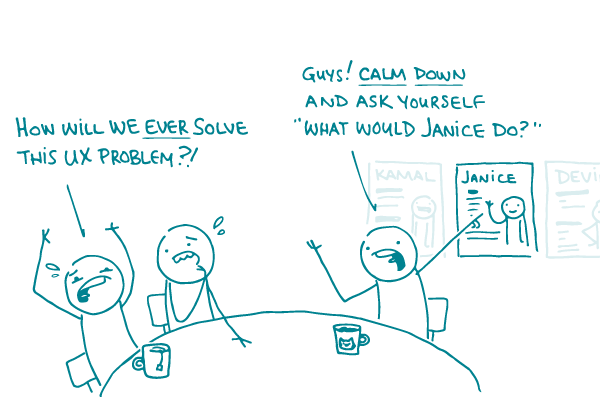
Here’s a completely unsurprising statement: at We ❤︎ Health Literacy Headquarters, we’re big fans of catering to users’ needs. But here’s where things can get tricky: if you’re building something complex, like a new health website, you might have several audiences with different goals.
How can you be sure you’re meeting all of their needs? That’s where personas come in.
Personas are composite users — in other words, they’re fictional characters based on insights from real users. They’re very useful for keeping the focus on your audience(s). Here’s what personas can do:
- Creating web content? Personas can remind writers to tailor health content for readers.
- Working on layout? Designers can use personas to develop a look and feel that will resonate with all audiences.
- Thinking about site structure? Personas can help your team organize the site according to users’ priorities.
You get the picture: personas are useful for the whole team. So put them to use, dear readers!
Here are some tips for developing great personas:
- Create personas to represent your main audiences — for example, if you’re building a website that will have vaccine information for parents and pediatricians, make a persona for each of those groups.
- Base your personas on research with actual users — like usability testing, interviews, and focus groups.
- Include each audience’s goals for the website and what they’ll expect when they land on your site.
- Make ’em short, sweet, and realistic — and include photos to help bring your personas to life.
The bottom line: The next time you’re building a website, use personas to keep your team on track and your users’ goals in mind.
Browse recent posts